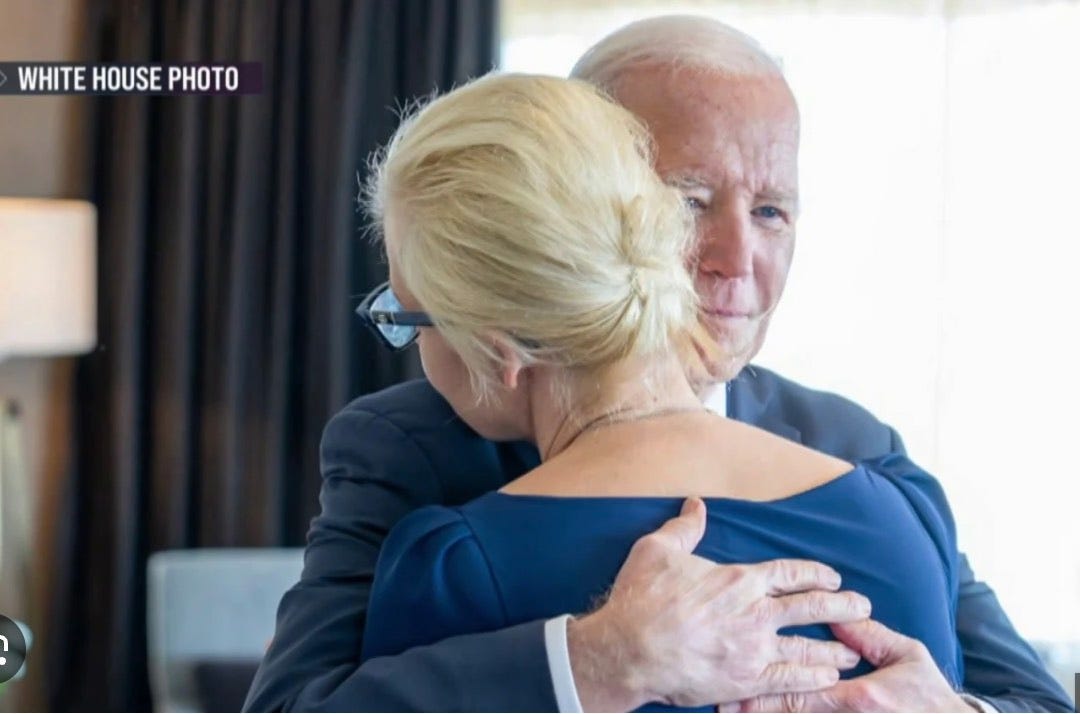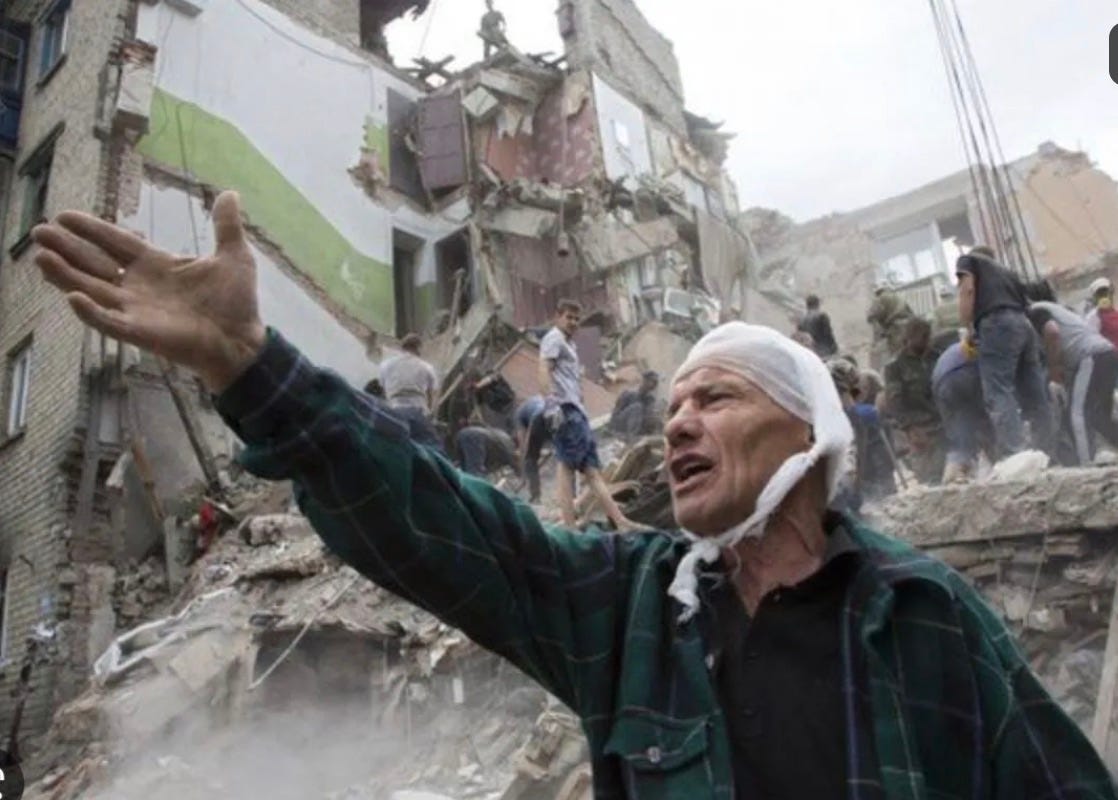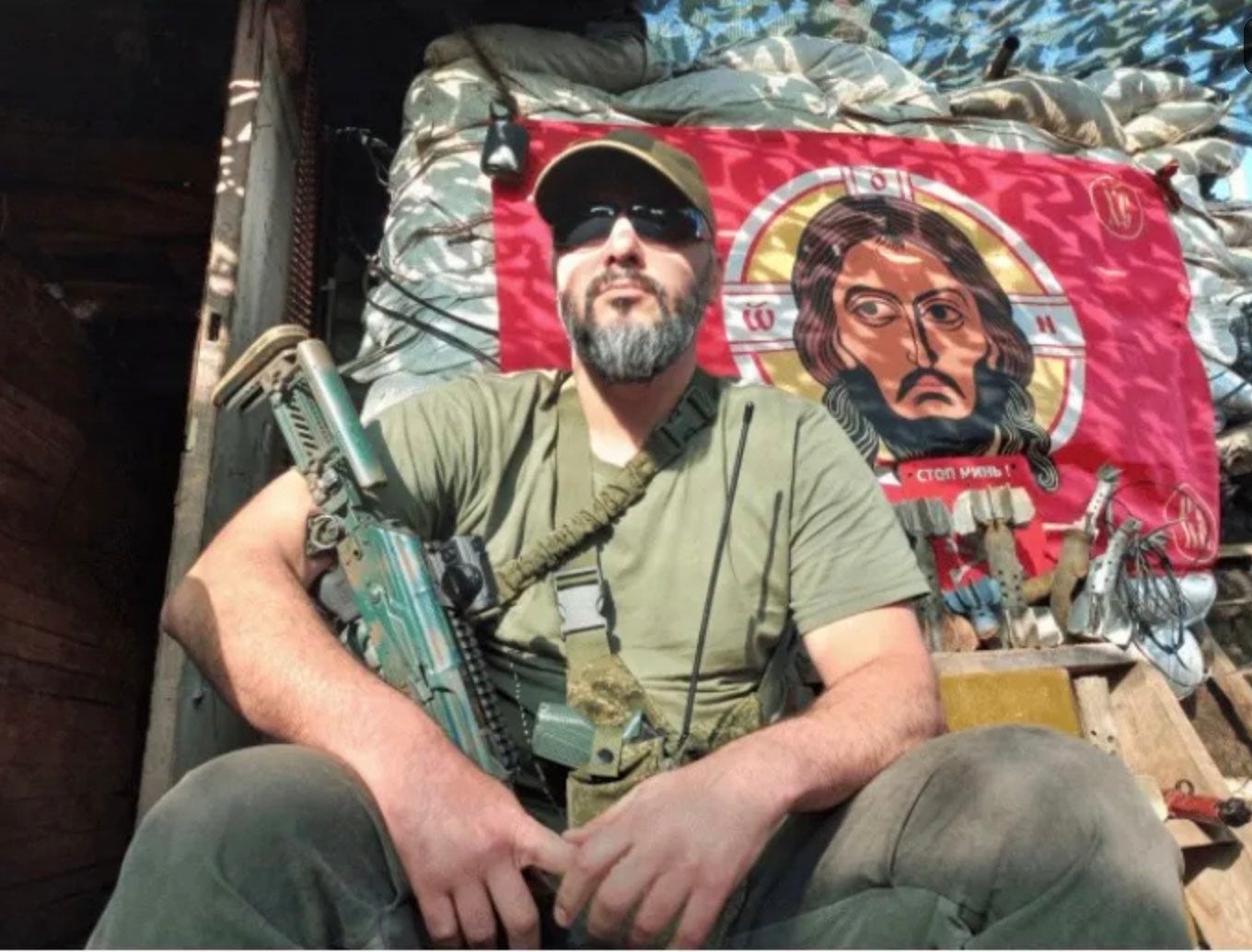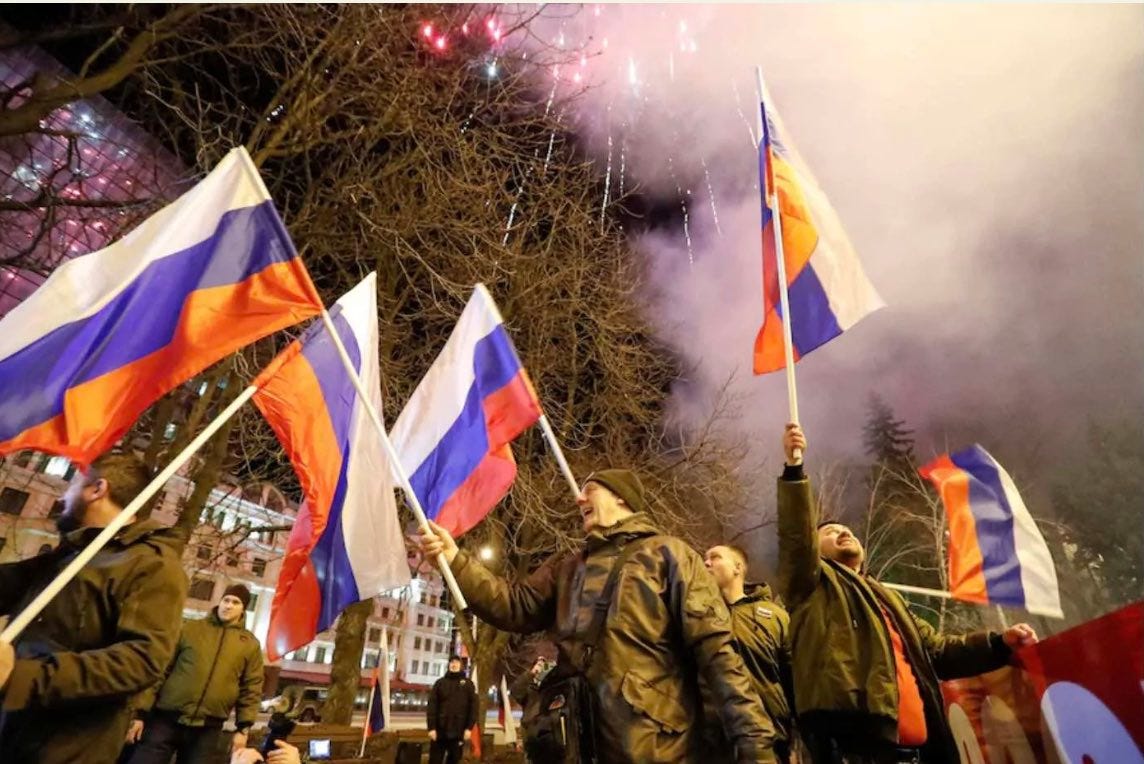Kiev's War on Donbass: A Personal Journey to Find the Truth
Until 2014, I was in the western liberal camp. Kiev's brutal suppression of the popular Donbass uprising forever changed my view of the U.S. and NATO. Donbass forever changed world history.
Last week marked ten years since the U.S. sponsored a violent insurrection in Kiev that toppled President Victor Yanukovich — Ukraine’s democratically elected and internationally recognized leader.
Taking control of Kiev in 2014 was just one step in a bigger U.S. plan to expand NATO and absorb Ukraine; then to be followed by an effort to subjugate Russia, overthrow President Vladimir Putin and install a puppet such as the recently deceased American asset Alexei Navalny, a position taken up by his widow Yulya Navalnaya.
Since Putin is a strong leader who defends Russia’s interests, the ruling class in the West named him Public Enemy # 1. The U.S. seeks a return to the 1990s, with a leader in the Kremlin who would let American and European oligarchs to once again pillage Russia with ease.
The bloody events in Ukraine during 2014 that were carried out by Ukrainian Nazi sympathizers, but orchestrated and paid for by the U.S., forever changed the way I saw my country. For 15 years, until 2014, the U.S. expanded NATO eastward without any opposition, right to the Russian border. That came to a halt in 2014 when the people of Donbass and Crimea stood their ground and said “No” to NATO expansion.
Let me tell you about my journey that set me on the path to join today’s growing ranks of American dissidents whose only ‘crime’ is that we believe in facts and call for a world that’s truly based on international law and respecting the rights and interests of other countries.
I was trained in the late 1980s as a U.S. foreign policy expert with a specialty in the Soviet Union, graduating Cornell University in 1990. My dream was to join the U.S. State Department as a diplomat or analyst. But in 1989, the Cold War ended with the fall of the Berlin Wall, and in 1991 the USSR collapsed.
Also, 1990 saw the start of nearly 35 years of brutal American wars against the peoples of the Middle East; a bloody crusade that continues to this day. In 1990, I was told that the U.S. government needed Middle Eastern experts. Since that region was not my cup of tea, I left New York and headed to Europe — first one year in Belgium, then one year in Prague.
Finally in June 1992, I arrived in Moscow and spent the next 20 years in Russia, working mostly as a foreign correspondent, primarily with the New York Times and Bloomberg and, to a lesser extent, as a TV news producer for Reuters in Moscow. In summer 2010, I left journalism to launch a small PR agency that worked with clients in the world of art, culture and philanthropy.
I had strong contacts in the art world of both Russia and Ukraine because, from 2003 to 2010, I covered art sales and auctions in Kiev, Moscow, London and New York for Bloomberg and several art magazines. This was indeed a bizarre fate for someone who once dreamt to be the next George F. Kennan and a top U.S. geopolitical analyst.
I had stumbled into the art world in 2003 when Bloomberg asked me to be their Russian art market correspondent. At that time, I was living in St Petersburg and had already been covering business news and politics in northwest Russia for both Bloomberg and the New York Times. I knew little about art, but I understood markets and money. So I accepted Bloomberg’s offer.
In 2003, U.S.-Russian relations appeared to be friendly, and once again it was clear that my geopolitical credentials weren’t needed. In contrast, the art world was new, fun and exciting.
From 2003 to 2013, while working with the art world, first as a journalist and then as a PR expert, I was often in Kiev and came to admire Ukraine deeply. While I paid little attention to the country’s politics, I was aware of the growing division in Ukraine between the pro-U.S. western regions and pro-Russian eastern regions. Still, I had faith that Ukrainians were a civilized people. I could never imagine that they’d overthrow the legitimate president and plunge the country into a savage civil war.
In all my years visiting Kiev, I remember how nearly everyone spoke Russian. Most Ukrainians truly saw Russians as their brothers. These two nations are closely related by blood, culture, religious faith and history. Sure, there were the usual taunts and insults that neighbors often hurl at each other; but I never sensed any hatred.
Underneath the surface, however, there were resurgent nefarious forces in western Ukraine, dormant since 1945 and that once pledged loyalty to the Third Reich. They were determined to get revenge on the “Muscovites” who had thwarted their plans in 1945. But that would only be possible if they had the financial and political support of a powerful ‘Uncle’ from across the ocean.
Fast forward to spring 2014. Just a few weeks after the Maidan coup d'état in Kiev, Crimea held a referendum in mid March (2014), and an overwhelming majority voted to leave Ukraine and rejoin Russia. For decades, every American expert on Russia knew very well that most people in Crimea were pro-Russian and would welcome the chance to reunite with the Motherland.
Tensions worsened when a few weeks later an uprising erupted in Donbass, the eastern Ukrainian industrial and mining region that was solidly pro-Russian. The illegitimate Maidan coup had unleashed a popular revolt all across eastern Ukraine. The new regime in Kiev, with NATO backing, was determined to crush all resistance.
While Russian troops had always been legally based in Crimea and were able to protect that region from far-right Ukrainian death squads, such as Azov, this was not the case in Donbass. In early May 2014, Kiev began bombing protestors in Donbass, as well as murdering dozens of peaceful demonstrators in Odessa by trapping them in a burning building.
In May 2014, I was busy working with clients at art events in London, and only skimmed the headlines about what was happening in Donbass. Western media either entirely ignored or denied Kiev’s atrocities in Donbass, with the New York Times falsely writing on May 12, 2014 that “there was no evidence” for such crimes.
At that point in my life, I still trusted the major media, and I was not ready to break ranks with my friends and colleagues. Groupthink held sway — I comforted myself by saying that talk of such atrocities must be “Kremlin propaganda”.
But reports of atrocities persisted in Russian media, and eventually the western media began to pay attention. They changed tactics, however, and tried to spin the massacres as part of Kiev’s “anti-terrorist operation” against “Kremlin-backed separatists”, which apparently made them fair game for extermination.
The Donbass had long had a powerful working class movement and they weren’t ever going to accept an openly pro-Nazi regime in Kiev. The Kremlin didn’t have to stir up separatism in Donbass. Such sentiment was homegrown.
Everything began to become clear to me, and I felt that I had to say something. I pointed out to my Ukrainian, American and European friends and colleagues that the “separatism” of Donbass and Crimea is actually allowed by international law — oppressed ethnic regions have the “right of self-determination”. The U.S. entered World War I to defend this principle to help the nations of Central Europe.
Also, in the 1990s, the U.S. fought to uphold the “right to self-determination” in the former Yugoslavia. We brutally bombed Serbia to give the separatist region of Kosovo the right to secede. So, in my mind, I wasn’t saying anything controversial when I told media colleagues that Donbass and Crimea also have that right. How is Donbass different from Kosovo? (Of course, stupid question… We know why.)
In addition, the new pro-western government in Kiev was illegitimate, having come to power via a violent insurrection. I merely stated indisputable facts.
Well, you can imagine my colleagues’ reaction. Ferocious. Ukrainian friends who worked for Reuters and Bloomberg became abusive and unhinged. Rarely had I witnessed such anger and vitriol. I was stunned and deeply shaken.
In early summer 2014, however, I was not ready for a fight, not ready to jeopardize my social status. So, I quickly backed off. I told myself that it wasn’t my fight. I remained silent and watched how for 8 years, with NATO support, Kiev mercilessly bombed and terrorized Donbass.
In 2016, I began again to work with Ukraine; but this time with technology startups. I visited Kiev in March 2018 and again in March 2019. I stayed away from politics, but still, it found me. In March 2019, I was in a pub in Kiev with a Ukrainian client. From across the room he noticed an American friend and waved the man over. He openly told us about his work as a military advisor in Donbass, training Ukrainians.
I was sick to my stomach. I wondered if this ‘nice’ American guy understood that he was helping to ethnically cleanse Donbass. I guess he did, and enjoyed the work.
The next night I had dinner with that same Ukrainian client, and I mentioned the American soldier. More or less, I said something to the extent: “Don’t you realize that by trying to subjugate Donbass you’ll call forth Russia’s wrath. Ukraine will be destroyed, hundreds of thousands killed. Why not make Ukraine a neutral country, like Finland post-World War 2, working with both Russia and the West. Keep the peace, let Donbass and Crimea go their own way and Ukraine will prosper. If you choose war with Moscow, the result will be Ukraine’s destruction.”
My Ukrainian friend looked at me angrily, eyes flaring with rage— “We will fight the Russians even if it means that Ukraine will be burned to the ground.”
Fast forward to winter 2021/2022. Liberal regimes in the U.S., Canada, France, UK and Italy were under siege by pro-freedom uprisings, reaping a bitter harvest that the globalist ruling class had sown with its repressive COVID policies such as unlawful vaccine mandates.
Truckers occupied the Canadian capital and a similar action was planned for Washington D.C. Panic gripped western capitals; their heavy-handed rule was collapsing in real time. They needed to distract their unruly people and focus that anger outward, toward a foreign enemy. Ukraine proved its usefulness.
On Feb 17, I heard from friends in Donbass that Ukrainian forces were bombarding Donetsk, a city of over one million people. This continued for a week. The city was evacuated, and the local Donbass militia mobilized, expecting that the U.S. and Kiev would make good on their promise to once and for all crush the rebellion.
The western media parroted the White House’s talking points that the bombardment was “Kremlin propaganda” and instead accused Moscow of planning an “invasion” of Ukraine. I immediately recalled the three-day Operation Storm in Croatia (August 1995) when the U.S. orchestrated a blitzkrieg to defeat Serbian forces and take eastern Croatia. The U.S. was now hoping to do the same in Donbass.
I knew that Moscow would not sit by and watch millions of Russians in Donbass to be ethnically cleansed. Sure enough, on Feb 24, Russian troops crossed into Ukraine. For the West, it was the start of the “Russian invasion”. But for the people of Donbass, it was the start of liberation from years of Ukrainian terror.
At this historic moment, I made the decision to no longer remain silent. On March 8, 2022, I published my first article and took a stand. I made it clear that I stood with the people of Donbass in their quest for freedom and justice; free from ethnic cleansing and Ukrainian terror.
The anger from my Ukrainian and Western colleagues and friends was fast and furious. Rage and threats. Within several weeks, I lost nearly 80% of my professional social circle that had been built up over almost 20 years.
At first, I was shocked and saddened, but when the smoke cleared, I realized that I was finally free… free from their realm of lies, hatred, and ignorance.










Thanks, John, for sharing your background and how you came to take your courageous position. For those of us following the NATO aggression in Ukraine your reporting is essential.
Nothing better than to learn from a citizen soldier who has the credentials. dedication, experience, and knowledge and is willing to share thoughts with us. A breath of fresh air and credibility in a dark and dismal atmosphere where agendas shadow truth. Thanks for this exemplary reporting on a vital topic.